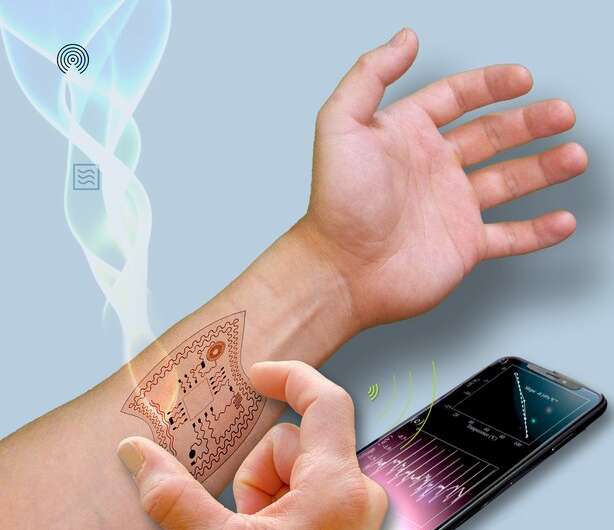From microwave ovens to Wi-Fi connections, the radio waves that permeate the environment are not just signals of Energy consumed but are also sources of energy themselves. An international team of researchers has developed a way to harvest energy from radio waves to power wearable devices.
Current energy sources for wearable health-monitoring devices have their place in powering sensor devices, but each has its setbacks. Solar power, for example, can only harvest energy when exposed to the sun. A self-powered triboelectric device can only harvest energy when the body is in motion.
The researchers developed a stretchable wideband dipole antenna system capable of wirelessly transmitting data that is collected from health-monitoring sensors. The system consists of two stretchable metal antennas integrated onto conductive graphene material with a metal coating. The wideband design of the system allows it to retain its frequency functions even when stretched, bent and twisted. This system is then connected to a stretchable rectifying circuit, creating a rectified antenna. This electricity can be used to power wireless devices or to charge energy storage devices, such as batteries and supercapacitors.
This rectenna can convert radio, or electromagnetic, waves from the ambient environment into energy to power the sensing modules on the device, which track temperature, hydration and pulse oxygen level. Compared to other sources, less energy is produced, but the system can generate power continuously—a significant advantage, according to Cheng.
This is a platform where we can easily combine and apply this technology with other modules that we have created in the past. It is easily extended or adapted for other applications, and we plan to explore those opportunities.”

